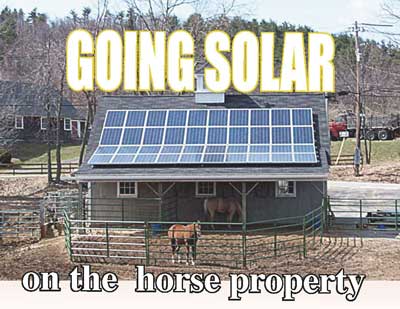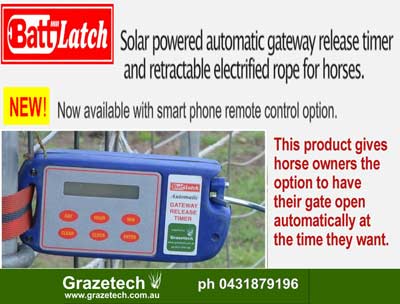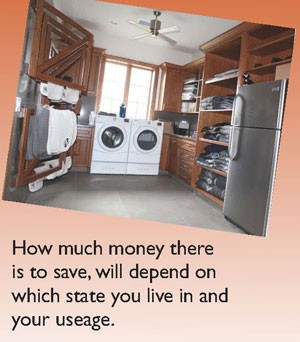The Green Horse section provides practical information on managing environmentally sustainable horse properties, readers stories and tips, as well as advice and articles from equestrian experts in their fields.
April May 2020
Vol 41 No6
In this issue of The Green Horse you will find the following articles:
Prepping your Paddocks for Winter by Rhiannon Brown - Envirapest
One of the silver linings of many spending a lot more time at home over the coming months is that we can put more time into preparing the pasture to minimise winter weeds.
Going solar on your horse property Pt 2
Once you have selected what solar system best suits your needs, then you need to look at how you can maximise the advantages.
Growing Fire Resistant Trees as Fire Breaks
Research shows that the strategic placing of water catchments and vegetation can create barriers for bush fire that may significantly contribute to the survival of buildings and infrastructure.
Flood, Fire or Famine
by Catherine Bird for Country Park Herbs
With each area faced with its own challenges, a herbal approach for your horse can be built around one or two keyherbs that support the horse facing the current environmental trials and still leave room to tailor for individual needs.
Not burnt, so why are the trees dying?
A few dead trees are not an unusual sight during a drought, but in some places, it is the first time in living memory so much canopy has died off.
PRODUCT NEWS
Let your horses move themselves.BattLatch Automatic Gateway Release Timer.This product gives horse owners the option to have their gate open automatically at the time they want.
Horse Bedding Workshop
The first workshop for the trial of recycled organics and its use as horse bedding ran at Cressfield stud, NSW, on 26th of February.
WIN A YEAR'S SUBSCRIPTION...
share your equine property management tips and each issue one reader will win.
Send ideas to -
The Green Horse Support <greenhorse@hoofbeats.com.au>


PREVIOUS ARTICLES
Available on line
FEB/MARCH 20 ANTS AWAY
by Mark Brown Envirapest
So, what can you do to deter ants from your house and your stables??
DJ19/20 KEEPING SNAKES OUT OF THE STABLE by Wendy Elks
Snakes may be protected under Wildlife regulations in Australia, and they may be great for keeping the mice and rats down, but do we want to find them in our stables near our horses and pets?
ON19 - TERMITES- common myths
by Rhiannon Brown, Envirapest
Your house and stables are looking wonderful this spring, but do you know what is happening inside the walls of your brick or timber building?
AS19 - OUCH THAT HURTS
by Catherine Bird for Country Park Saddlery
The extent of the swelling is usually an indication of the severity of the infection or injury and the cause needs to be established before giving herbs.
JJ19 - MANAGING PASTURE
by Rhiannon Brown, Envirapest Healthy pasture means healthy horses.
A/M19 - STOP THOSE WEEDS
Property biosecurity
by Rhiannon Brown, Envirapest
Putting simple precautionary steps into place can make it tough for weeds to get a hold on your equine paradise.
|
  
  


As highlighted in Part 1 of Going Solar on the Horse Property in the last issue, Australians have embraced the use of solar technology.
Once property owners have done the homework needed to find the best systems for their requirements, it is worth ensuring that they’re doing what they can to maximise the benefits of the system once it’s in place.
With the process of converting sunlight into electricity using Solar Photovoltaic (PV) systems producing zero greenhouse gas emissions it is considered a renewable energy resource.
With ever-changing systems and hopefully a fossil fuel free future there is a certain safety in investing in PV systems. It would be fair to say however, that one of the most appealing reasons many people choose to instal solar, is for the economic benefits and the opportunity to reduce the cost of their power bills. How much money there is to save, will depend on which state you live in, with feed-in tariffs, the costs of power varying across the states and your own family’s usage and set-up.
MAXIMISE THE EFFECT OF YOUR SOLAR PANELS
Once you have done the homework needed to find the best systems for your requirements, it is worth ensuring that you’re doing what you can to maximise the benefits of the system once it’s in place. It is no secret that solar panels will only produce electricity when the sun is shining so ensure that tasks, which can be done during the day while the sun is shinning, are completed to maximise the electricity usage, while you are generating your own electricity and not hooked on the traditional grid.

With a horse property, this only requires a small change-up for some places. Such as filling up water troughs, irrigating paddocks if you’re using a water pump during the day instead of early mornings before sunrise or late at night. A good idea is to set timers if you’re not around to do it manually.
Other energy requiring appliances such as throwing that load of saddle pads, bandages or horse rugs in the machine during the day. Another idea is to turn off appliances while they’re not in use.
Obviously the biggest cost savings won’t necessarily be in the stables, it might be around the house with plenty of areas you can maximise your savings while the sun shines. These include turning appliances on standby completely off, charging things like phones, lap tops, tablets, portable chargers etc. throughout the day.
Further running appliances one at a time, for example not vacuuming at the same time as you’re running the dishwasher, will make sure you only use your own solar powered energy, not having to jump on to the grid. Depending on how sunny a day it is, how big your system is and which setup you have, the panels might not be able to run all your appliances at once, so to make sure you don’t have to pay for the electricity, use one at a time, but still during the day. 
The simplest, yet most easily forgotten way to save power is turning off all lights and appliances at the wall when not in use. If an appliance have a little (often red) light on – like a TV when you just switch off with the remote - it is still using energy. Much more about how to efficiently save energy according to Peter Vowles from Custom Home Builders in the next issue.
COMPLICATIONS
There is always a risk involved in changing your energy supply. Solar is a relatively new industry so before making a final decision check the company has a good history and you have a written agreement on what has been offered. There is a risk, as in any industry, so a bit of homework is required! It is also important to keep in mind that batteries and solar panels produced are generally not fossil-fuel free and solar panels are manufactured using sulphuric acid. Most batteries needs replacing every 5-15 years. We can still conclude that solar panels are a more sustainable and cheaper solution than the alternative and the future will see solar panels that are even greener!
MONITORING YOUR ENERGY CONSUMPTION
Once you have installed your desired PV system, there are easy ways to track your usage, money paid and money earned. When you produce more energy than you can use on your property the traditional energy provider pays you (varying amount of money) per kilowatt, to purchase this excess energy.
You can download an app that is connected to your solar panels and it will monitor every step, half-hourly, hourly, daily and monthly. Having all this information at your disposal will give you an insight into what you have available and what you have used, and it is a very motivating way to track your energy consumption and enjoy your free solar power.
It is really satisfying to know that you are helping the environment AND your wallet by making simple changes. Money saved on energy is more money for our passions… and there is always a new saddle we are looking at! |